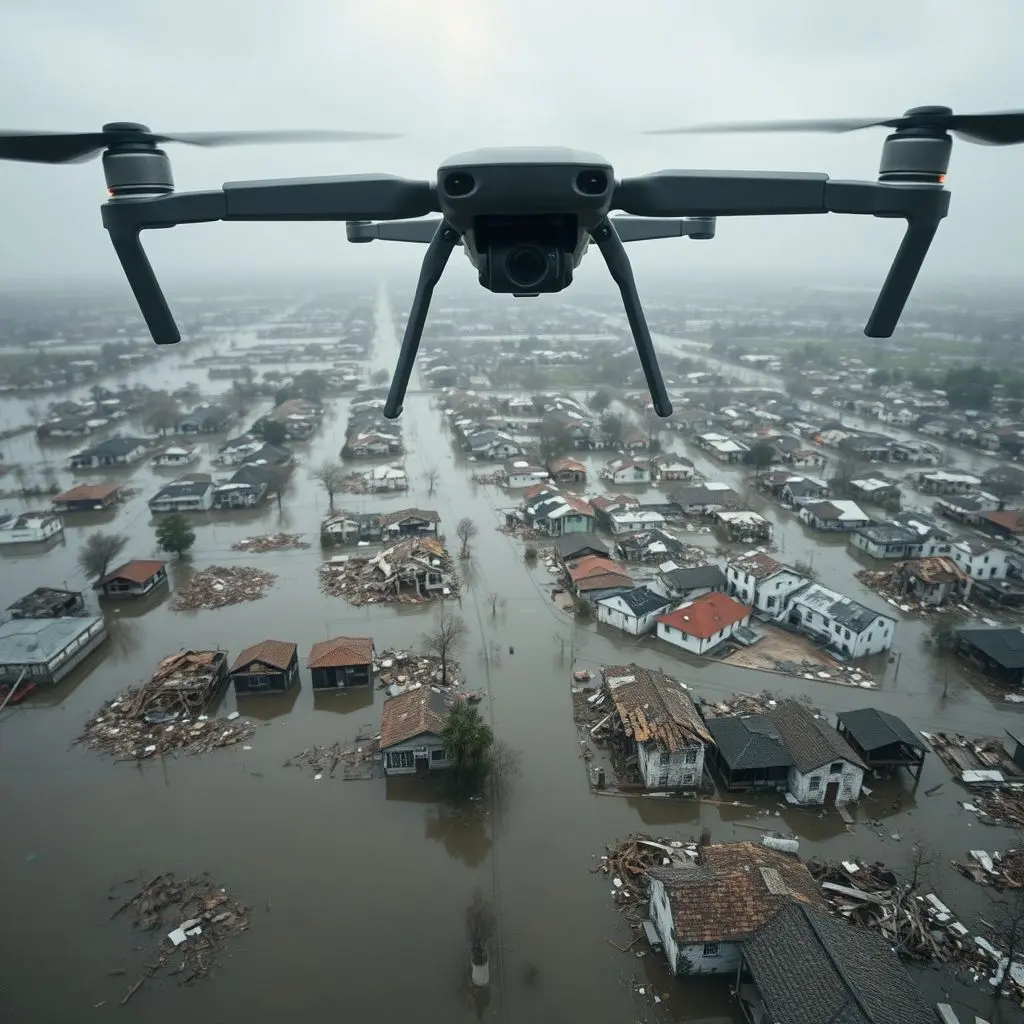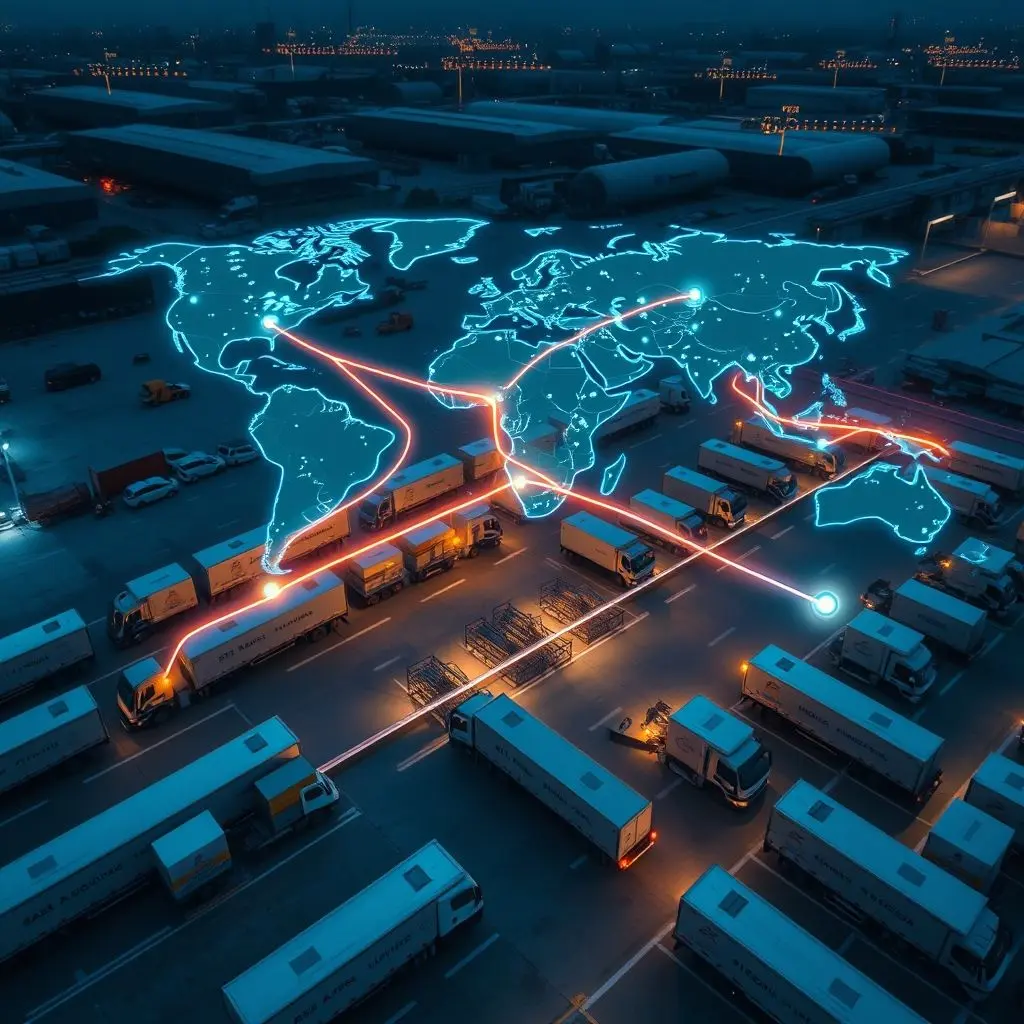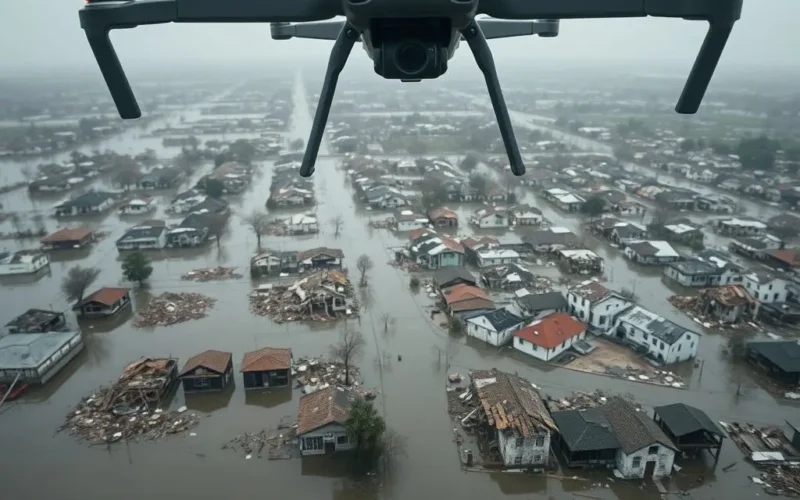In the face of overwhelming chaos and the critical race against time that defines disaster scenarios, every second truly matters. What if technology could slice through the confusion, providing clarity, speed, and precision when they are needed most? This isn’t science fiction; it’s the rapidly evolving reality of Artificial Intelligence (AI) stepping up to play a pivotal role in disaster relief efforts worldwide.
The sheer scale and unpredictable nature of natural and man-made catastrophes often push human capabilities to their limits. Communication lines fail, infrastructure collapses, and access becomes impossible. It’s in these dire moments that AI, working in concert with other advanced technologies, is proving to be an indispensable lifeline.
We’re talking about intelligent systems that can analyze vast amounts of data in moments, machines that can navigate dangerous environments humans cannot, and algorithms that can optimize complex operations under extreme pressure. From the initial moments of impact through the prolonged recovery phase, AI is reshaping how we respond, offering hope and efficiency in the darkest hours.
Curious to see a quick visual overview of this powerful synergy? Check out this YouTube Short:
Table of Contents
Eyes in the Sky: AI-Powered Drones for Rapid Assessment
One of the most immediate challenges after a disaster is understanding the extent of the damage and locating those in need. Traditional methods involving ground teams or manned aircraft are often slow, dangerous, or simply impossible due to blocked roads and hazardous conditions. This is where AI-powered drones are revolutionizing rapid assessment and search and rescue (SAR).

Equipped with high-resolution cameras, thermal sensors, and other imaging technology, drones can fly over devastated areas, capturing detailed aerial imagery. But the real magic happens when AI comes into play. AI algorithms can process this flood of visual data in near real-time to:
- Map Damage Extent: Automatically identify and categorize structural damage to buildings, roads, and bridges. This provides responders with an instant, comprehensive overview of the hardest-hit areas.
- Spot Survivors: Utilize computer vision to detect signs of life, whether it’s a person waving for help, a heat signature under rubble (using thermal cameras), or even identifying vehicles or structures that might be occupied.
- Identify Hazards: Recognize potential dangers like downed power lines, gas leaks, or unstable structures, helping ground teams navigate safely.
- Create 3D Models: Generate detailed 3D maps and models of the affected area, offering invaluable spatial information for planning rescue operations and resource distribution.
The speed and accuracy with which AI can analyze drone data significantly reduce the time it takes to understand the situation on the ground, allowing responders to deploy resources more effectively and potentially saving lives that might otherwise be lost awaiting assessment.
Anticipating the Storm: AI for Disaster Prediction
While response is critical, predicting disasters or forecasting their path and intensity is equally vital for preparedness and mitigation. AI is proving to be a powerful tool in this domain, moving beyond traditional forecasting methods.

Machine learning models can analyze vast, complex datasets that include historical weather patterns, seismic activity, satellite imagery, sensor data, social media feeds, and more. By identifying subtle patterns and correlations that human analysts might miss, AI can:
- Improve Weather Forecasting: Enhance the accuracy and lead time of predictions for hurricanes, tornadoes, and severe storms.
- Forecast Flood Risks: Combine hydrological data, weather forecasts, and terrain analysis to predict areas most likely to flood and the potential severity.
- Predict Wildfire Spread: Model fire behavior based on weather conditions, topography, vegetation, and current fire data to forecast spread paths and speeds.
- Identify Earthquake Precursors (Early Stages): While predicting earthquakes precisely remains a significant scientific challenge, AI is being used to analyze seismic data for subtle anomalies that *might* indicate increased risk in specific areas or timeframes, though this is an area of ongoing research and requires caution and validation.
- Assess Impact Severity: Predict which populations or infrastructure are most vulnerable based on geographical and demographic data, allowing for targeted warnings and evacuations.
The ability to anticipate potential threats, even with a few extra hours or days of lead time, can make a monumental difference in preparing communities, reinforcing infrastructure, and conducting timely evacuations, thereby minimizing loss of life and property.
Smart Coordination: AI in Logistics and Resource Management
Once a disaster strikes, getting the right resources to the right people at the right time is a monumental logistical challenge. Damaged infrastructure, overwhelming demand, and communication breakdowns can turn aid distribution into a nightmare. AI is stepping in to optimize this critical phase.

AI algorithms can process real-time information about road conditions (from drones, satellite imagery, or crowd-sourced data), inventory levels at distribution centers, the location and needs of affected populations (often identified via drones or aggregated reports), and available transport resources. Using this data, AI can:
- Optimize Supply Chains: Determine the most efficient routes for delivering aid, considering damaged roads and congestion.
- Manage Inventory: Forecast demand for specific supplies (water, food, medical aid, shelter materials) based on the disaster type and affected population demographics, ensuring resources are allocated effectively.
- Coordinate Resources: Match available personnel, vehicles, and equipment with specific needs and locations.
- Dynamic Re-routing: Instantly adjust logistics plans based on changing conditions on the ground, such as new road closures or shifting areas of greatest need.
- Predict Bottlenecks: Identify potential choke points in the supply chain before they happen, allowing for proactive intervention.
By bringing unparalleled efficiency and adaptability to logistics, AI ensures that vital aid reaches those who need it most, faster and more reliably than ever before, maximizing the impact of relief efforts and minimizing suffering.
Challenges and the Road Ahead
While the potential of AI in disaster relief is immense, its implementation isn’t without hurdles. Challenges include the need for robust and reliable data infrastructure (which is often compromised during disasters), the ethical considerations of using AI (especially in prediction and surveillance), ensuring accessibility and equity in AI-driven responses, and the need for seamless integration with existing human-led emergency response systems. Training responders to work alongside AI tools is also crucial.
Despite these challenges, the trajectory is clear. As AI technology matures and becomes more accessible, its role in disaster preparedness, response, and recovery will only grow. Future advancements could involve more sophisticated predictive models, completely autonomous or semi-autonomous AI agents assisting on the ground, and more intuitive interfaces for human responders to leverage AI insights effectively.
FAQs about AI in Disaster Relief
Here are some common questions about how AI is being used to help during emergencies:
Q: Is AI replacing human first responders?
A: No, AI is primarily designed to augment human capabilities, not replace them. AI can handle data processing, analysis, and autonomous tasks in dangerous areas, freeing up human responders to focus on critical, on-the-ground interactions and decision-making that require human judgment and empathy.
Q: How does AI get data in areas where communication is down?
A: AI systems rely on diverse data sources. During communication outages, they can still utilize data collected by drones (which can store data onboard), satellite imagery, pre-disaster mapping, and data from resilient communication systems like satellite phones or mesh networks if available. Building robust, disaster-resistant data collection methods is an ongoing focus.
Q: Can AI prediction models be wrong?
A: Yes, like any model, AI predictions are based on probabilities and the data they are trained on. They are not infallible. Their accuracy depends heavily on the quality and quantity of data, and the complexity of the system being modeled. They are best used as tools to inform decision-making and preparedness, not as absolute certainties.
Q: Is this technology expensive?
A: Initial setup costs for advanced AI systems and drones can be significant. However, the long-term benefits in terms of saved lives, reduced property damage, and optimized resource use can far outweigh the initial investment, making it a cost-effective solution in the grand scheme of disaster management.
Moving Forward with Intelligent Assistance
The integration of AI into disaster relief is not merely an technological upgrade; it’s a fundamental shift in our capacity to react effectively when crises strike. By empowering us with better information, faster response times, and smarter resource allocation, AI is enhancing the resilience of communities and strengthening the hands of those who rush towards danger to help others. As we continue to develop and refine these intelligent tools, the prospect of mitigating the devastating impact of disasters becomes increasingly within reach, offering a beacon of hope forged in data and driven by compassion.





